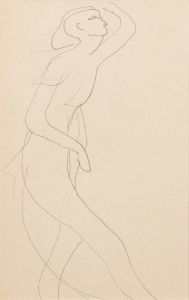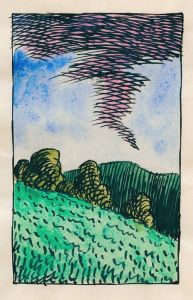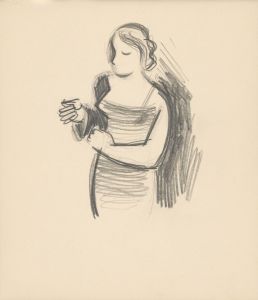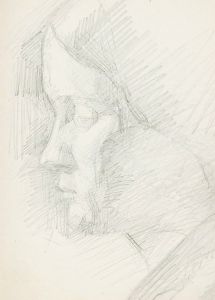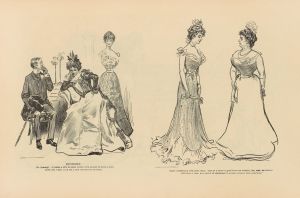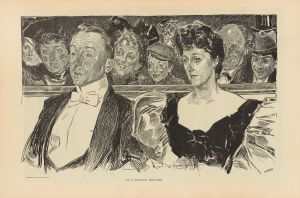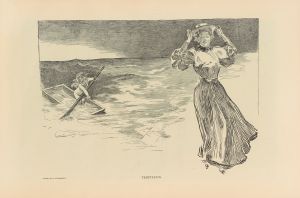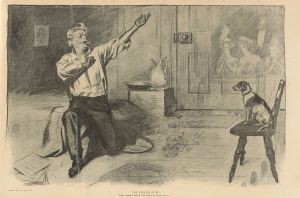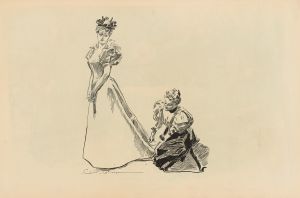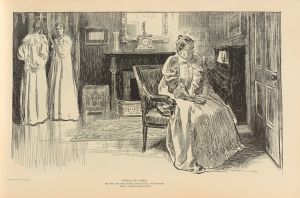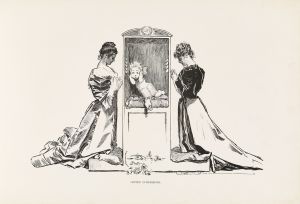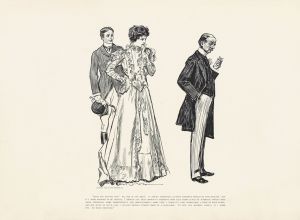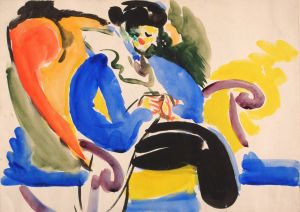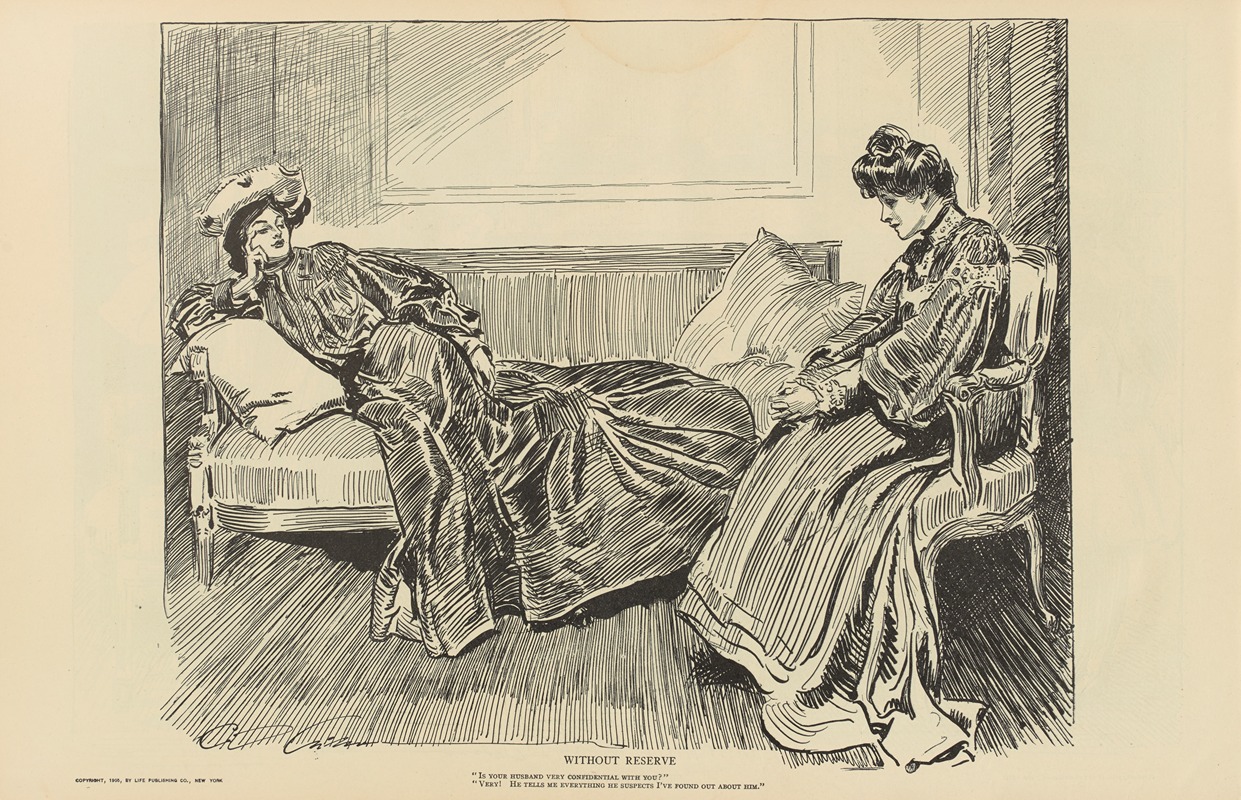
Without Reserve
A hand-painted replica of Charles Dana Gibson’s masterpiece Without Reserve, meticulously crafted by professional artists to capture the true essence of the original. Each piece is created with museum-quality canvas and rare mineral pigments, carefully painted by experienced artists with delicate brushstrokes and rich, layered colors to perfectly recreate the texture of the original artwork. Unlike machine-printed reproductions, this hand-painted version brings the painting to life, infused with the artist’s emotions and skill in every stroke. Whether for personal collection or home decoration, it instantly elevates the artistic atmosphere of any space.
Charles Dana Gibson was an influential American illustrator, best known for creating the iconic "Gibson Girl" image, which became a symbol of the idealized American woman at the turn of the 20th century. One of his notable works is "Without Reserve," a piece that exemplifies his artistic style and thematic focus.
"Without Reserve" is a black-and-white illustration, typical of Gibson's work, which was primarily published in magazines and books. Gibson's illustrations were characterized by their detailed line work and the ability to convey complex social themes and emotions through simple yet expressive compositions. His work often explored themes of social class, gender roles, and the dynamics of relationships during the late 19th and early 20th centuries.
In "Without Reserve," Gibson captures a moment of social interaction, a common subject in his oeuvre. The illustration likely features characters dressed in the fashion of the time, reflecting the societal norms and expectations of the era. Gibson's attention to detail in clothing and posture helps to convey the status and personality of his subjects, often with a touch of humor or irony.
Gibson's illustrations, including "Without Reserve," were widely published in popular magazines such as Life, Harper's Weekly, and Scribner's, reaching a broad audience and influencing public perceptions of beauty and social behavior. His work played a significant role in shaping the visual culture of the period, and the "Gibson Girl" became an enduring symbol of American femininity.
The "Gibson Girl" was characterized by her elegant demeanor, fashionable attire, and a sense of independence and confidence. This archetype was seen as a new standard for women, representing both traditional femininity and the emerging modern woman. While "Without Reserve" may not specifically depict a "Gibson Girl," it likely shares the same stylistic elements and social commentary that define Gibson's work.
Gibson's impact on American art and culture extended beyond his illustrations. He was a prominent figure in the art community, serving as the president of the Society of Illustrators in New York. His work influenced subsequent generations of artists and illustrators, and his legacy continues to be studied and appreciated for its artistic merit and cultural significance.
"Without Reserve" is an example of Gibson's ability to capture the nuances of human interaction and the subtleties of social commentary through his art. While specific details about the illustration's content and context may not be extensively documented, it remains a testament to Gibson's skill as an illustrator and his influence on American visual culture.





